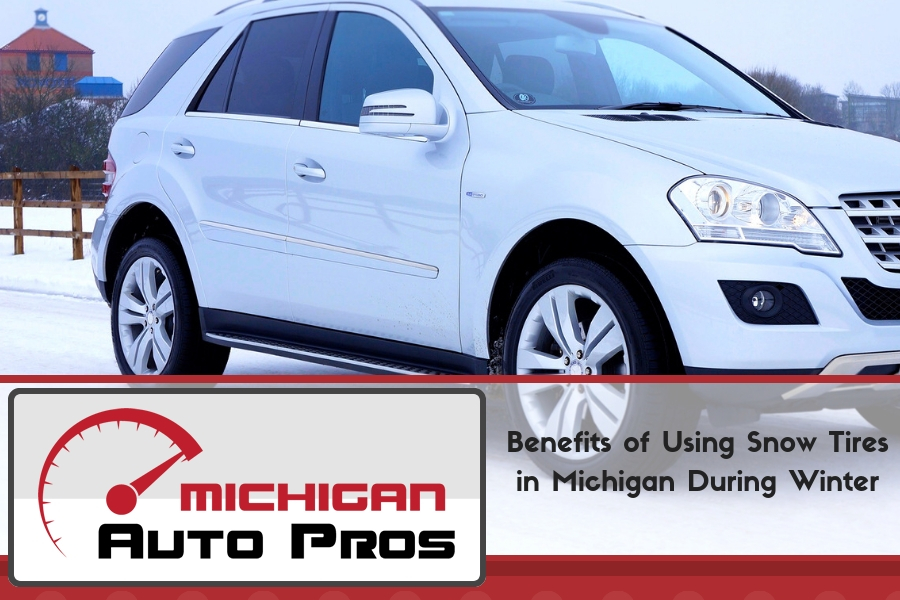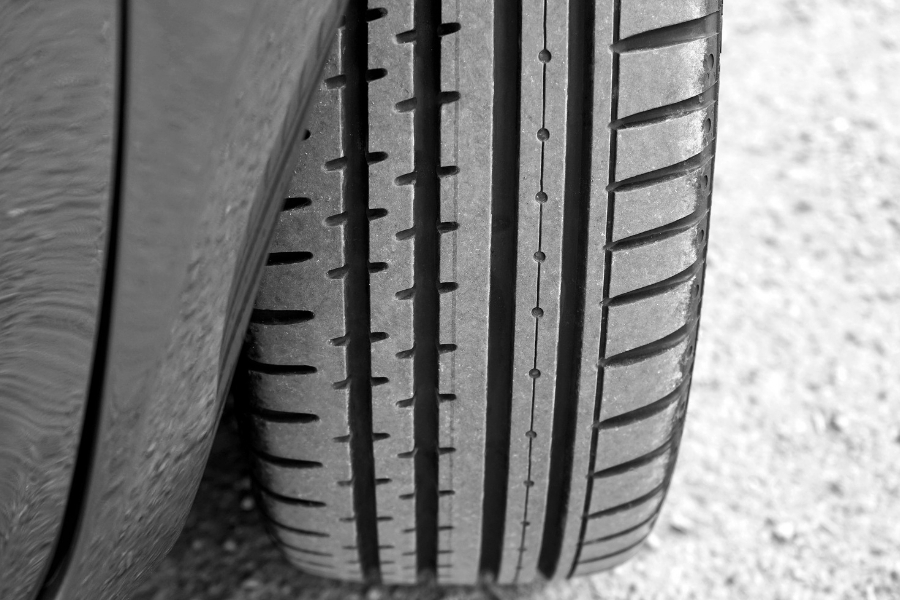It’s easy to overlook vehicle maintenance amidst all the seasonal bustle. Before you head for the slopes or out in search of latest sale, creating a checklist to ensure your car has been properly winterized prior to the first snowfall is an excellent way to ensure safe passage through the colder months here in Michigan. Extra weight, windshield washer fluid, flares, and a few emergency blankets are all an excellent preemptive strike against disaster. But a good set of snow tires should be the crown jewel atop any winterization strategy. Read on while we discuss the details of purchasing a set of snow tires to help you navigate this year’s winter wonderland.
Benefits of Using Snow Tires in Michigan During Winter
So what are snow tires and why do you need them? In short, snow tires are tires which dramatically enhance traction in snowy conditions. But like most things, there’s a little more to it. Snow tires work by utilizing a wider, deeper tread pattern than that of standard tires. Winter provides some of the harshest driving conditions, and through their unique design snow tires pack snow and ice as they’re spinning which allows traction during loose and slippery conditions. Many times, snow tires will also be made of a softer rubber compound. This allows better grip on solid pavement. Often, roads aren’t entirely snow-covered and patches of bare asphalt peek through an otherwise snow-slick road. Softer rubber allows the tires to cling to asphalt, while the deeper and wider tread patterns help them cope with any loose snow and sleet.

Understanding Your Drivetrain
Your engine creates torque and horsepower to get you from point A to B, but your tires are solely responsible for applying that power to the road. Engineers employ one of four means of taking power from the engine and translating it to your tires.
- FWD (Front Wheel Drive): Vehicles with FWD apply power by only spinning the front two wheels, while the rear wheels simply roll. This configuration is common on many cars today. Because cars with FWD drive and steer with the front wheels, it’s unsurprising that the front tires can wear quickly. FWD cars benefit greatly from snow tires, and their effectiveness is enhanced by the additional weight placed upon them by the engine.
- RWD (Read Wheel Drive): RWD is the opposite of FWD. In RWD vehicles, only the rear wheels apply power to the road. This configuration is common in sports cars because of the enhanced handling characteristics it offers under ideal road conditions. Unfortunately, when faced with adverse conditions RWD cars offer the worst performance due to their generally being very little weight placed over the tires, which would otherwise aid in biting into loose surfaces. RWD vehicles can benefit tremendously from snow tires.
- 4WD (Four Wheel Drive): 4WD is common on trucks and SUVs. This configuration helps navigate unplowed terrain. It’s also especially helpful should you find yourself in a ditch. When 4WD is engaged, all four wheels spin in unison. On vehicles equipped with it, 4WD is usually activated by selecting it with the gear shifter. On older vehicles, the driver would have to get out and flip a lever on the wheels. Under normal driving, 4WD-equipped vehicles typically operate as RWD vehicles, and allow the driver to engage 4WD if faced with adverse conditions. Drivers generally use 4WD only when moving in a straight line, as taking turns with it engaged will cause wheel hop and a vibrating or shuddering sensation inside the car. Although particularly well-suited for getting out of trouble, 4WD vehicles can still benefit greatly from snow tires as they generally operate with only two spinning wheels most of the time.
- AWD (All Wheel Drive): AWD and 4WD are terms sometimes used interchangeably (though incorrectly) to describe any vehicles that distribute power to all four wheels. However, unlike 4WD, vehicles with AWD distribute the engine’s power to all the wheels, all the time. AWD offers a decisive advantage in adverse conditions. Through sophisticated gearing, AWD-equipped vehicles can disperse power to wheels dynamically; reducing power to a wheel that has lost traction and dividing it among the wheels which still cling to the road. AWD drivetrains also allow the wheels to spin independently of each other, while still receiving power from the engine. Imagine driving in a tight circle – the outside wheels spin faster than the ones on the inside. 4WD forces all wheels to spin at the same speed, causing the vibration and wheel hop. AWD vehicles will not experience this. Snow tires are a natural complement to AWD-equipped cars. The result is the ideal vehicle for traversing inclement conditions.
Do I need snow tires?
Snow tires provide enhanced traction and control in snowy conditions, and peace of mind when inclement weather is in the forecast. They also create a safer driving experience and a more reliable car. New or inexperienced drivers will feel more confident with snow tires. Snow tires are no replacement for safe driving practices however and will do little against sheets of glare ice – proceed with caution.
Four or two?
It’s common practice for budget-minded drivers to equip their cars with only two snow tires; generally, on the drive wheels. This would mean the front wheels of an FWD car, and the rear on RWD. While this may provide some improved traction, it’s not ideal. On any car, regardless of the drivetrain, all four tires work together to apply power and maintain traction. Snow tires also wear differently. Because of their softer composition and deep, wide treads, snow tires will create more road noise and wear faster than conventional tires. If possible, it’s best to stretch your budget a little farther and get all the peace of mind that a full set offers.
Snow Tire Alternatives
There are some alternatives to snow tires, and their practicality and legality varies. Chains and studs, through relatively uncommon, can offer excellent traction. Studs are essentially miniature metal spikes, which bite into the road surface. They can be quite loud, and only useful in the worst conditions. Wrapping tires in metal chains can offer superior traction. However, these are only helpful in the worst conditions, and limit a vehicle to low-speed travel. Many jurisdictions have outlawed chains and studs due to the damage they can cause to the roads. It’s best to check with your town before purchasing a set of chains or studs.
All-season tires are another alternative, and far more common than any metal furnishings. As the name suggests, all-season tires are intended to perform across a wide range of conditions. They can perform respectively in many conditions but will falter when faced with extremes. If you live in an area that experiences minimal and infrequent snowfall, all-season tires may be a viable alternative to purpose-built snow tires. However, a true snow tire will always outperform an all-season tire amidst heavy snow and ice.
At Good Care Auto, their experienced tire technicians are looking forward to helping you find the best set of snow tires for your vehicle. They stock all major brands and cater to all budgets. Let Good Care Auto take the confusion out of snow tires. Call them at (734) 285-1188 and take advantage of their industry-leading facility and expertise. Schedule an appointment with Good Care Auto today!
